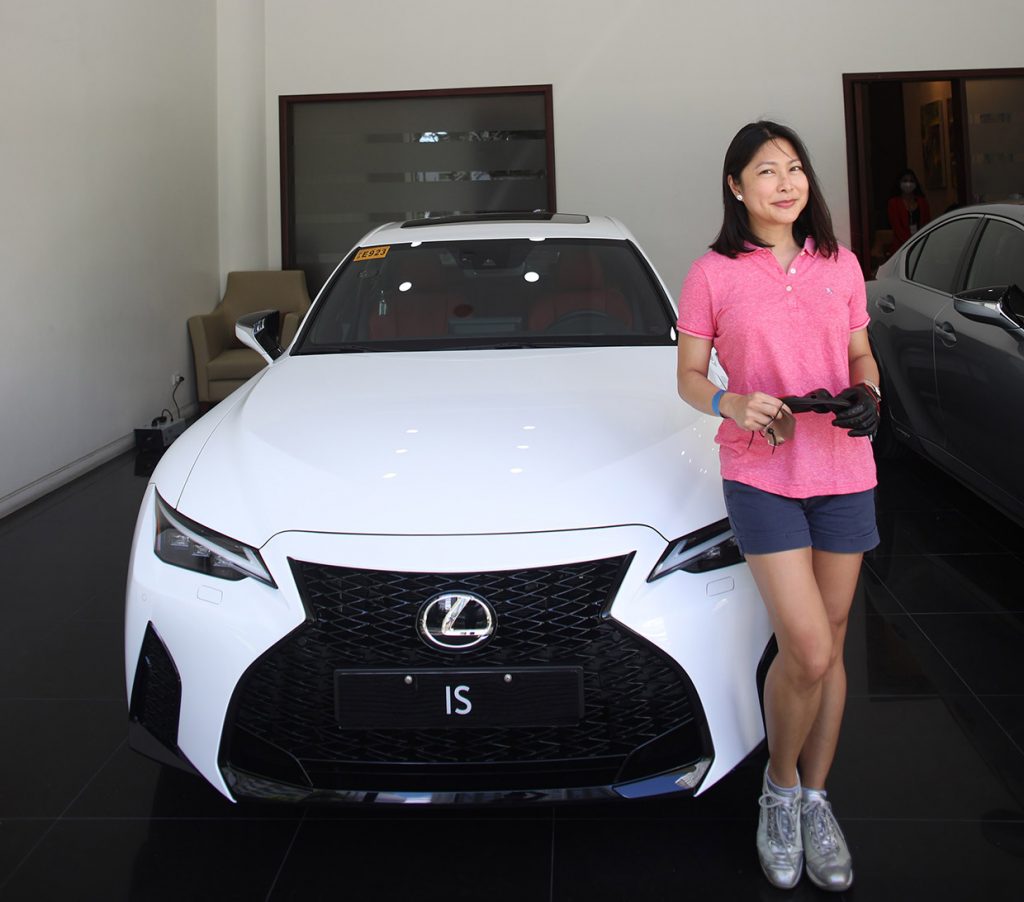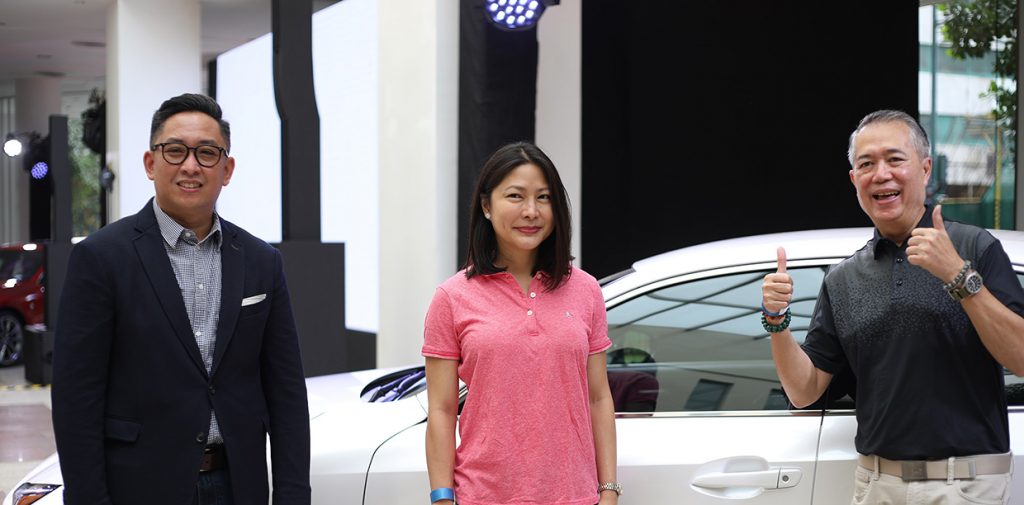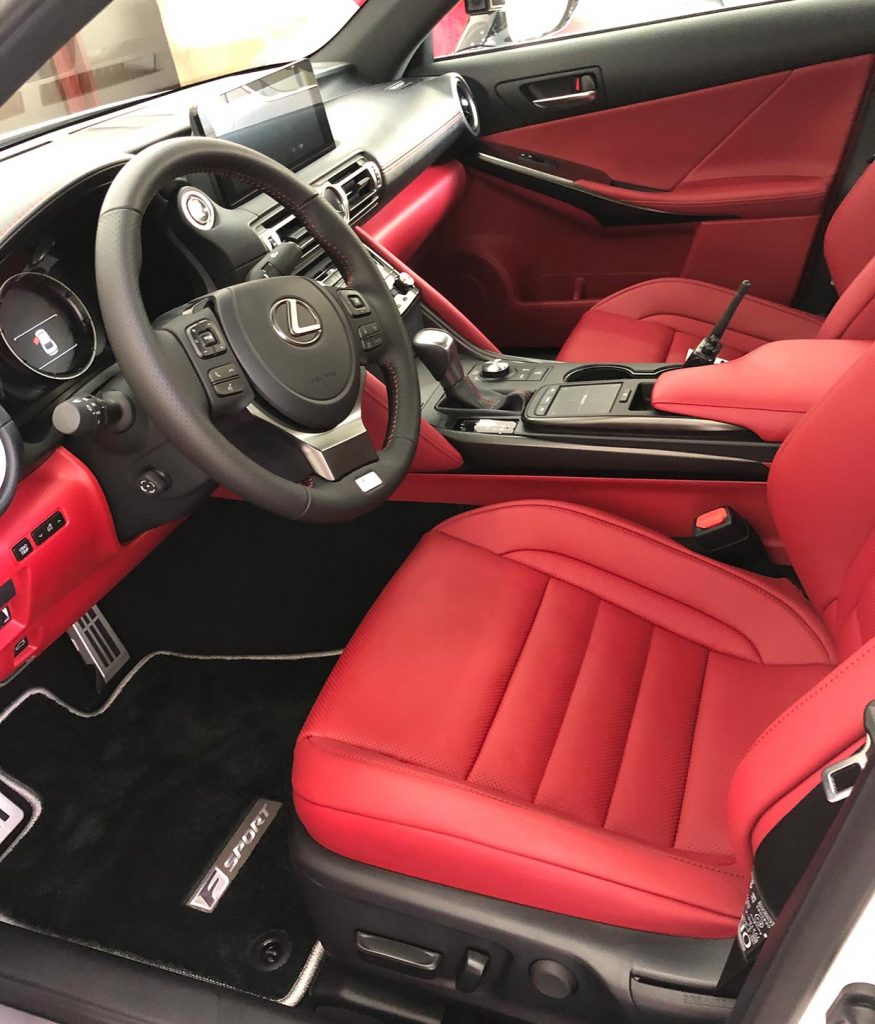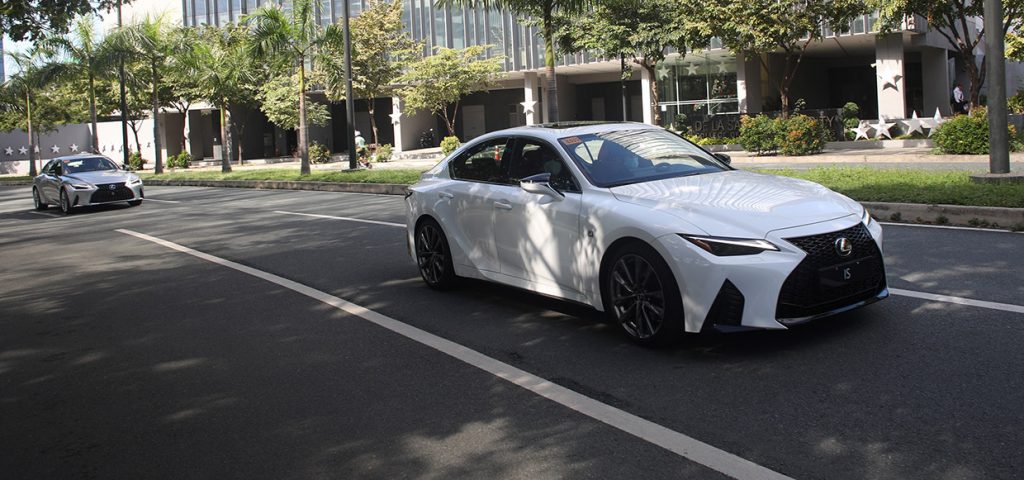“Fire is the test of gold; adversity, of strong men.”
Amid the adversities of the Covid-19 pandemic, this is a relevant statement from Martha Graham (her artistic innovations called the “Graham Technique” reshaped American dance, and she was named Time Magazine’s “Dancer of the Century” and among the females of People Magazine’s “Icons of the Century”).
What does adversity have to do with cars? Everything. Adversity is also a test of strong cars, and of strong car companies.
With the challenges of the pandemic, it was a show of strength for Lexus to organize an in-person test-drive event for the new Lexus IS on November 21. This turned out to be a fitting backdrop for the Lexus IS, which is itself a product of adversity.
The new IS is the first Lexus model that was born and bred at the Shimoyama Technical Center Test Track, where the toughest and most challenging roads in the world have been recreated. In contrast with the historic Nürburgring Nordschleife in Germany where various manufacturers test their models, the Shimoyama Test Track is Lexus’s own—built with grueling conditions so that every performance aspect of the IS could be finely tuned.

This level of dedication (going as far as creating its own test track to master its design) exhibits the Japanese spirit of ‘omotenashi,’ where customers’ needs are anticipated long before customers realize it for themselves. With all types of road conditions anticipated and tested for, the new IS is designed to give drivers confidence and full control in whatever lies ahead.
The feelings of safety and confidence in driving and human interactions were something we experienced at the Lexus IS drive itself. All media drivers had to undergo Covid-19 testing, a medical check-up, and health declaration protocols upon arrival. We were each equipped with a safety kit: a package of face masks, face shields, and driving gloves. Due to the rarity of in-person events since the pandemic, the IS test drive was also a rare opportunity for members of the motoring media to physically see and connect with one another at the Lexus Showroom. This highlights another Lexus trait—the extraordinary effort it takes to create connections among people, and between drivers and cars.

I found a personal connection with the IS F-Sport variant. As a lawyer that spends most of the week working (and yes, still going out to meetings despite the pandemic), I can envision the IS F-Sport as meeting the daily demands of city driving while having the capability of enduring the more rigorous demands of recreational driving when I need to get away for the weekends (thanks to the F Sport’s 310hp V6 engine). While the F-Sport has an “eco-drive” feature, the IS also has a 300h hybrid variant for the more environment-conscious drivers (according to my friend and Philippine Star Business Editor Marianne Go who tested the IS 300h, it drives smoothly and powerfully like a non-hybrid sedan).
With all the innovations in the engine, chassis, suspension and safety of the new IS, there remains a sense of familiarity with its physical look. The grill is similar to the spindle grills of earlier Lexus sedans (such as the 2019 ES 350 F Sport). The low and wide stance is characteristic of the IS design DNA, but 30 millimeters were added to make the new IS wider than its predecessors. Its new look features a unified tail lamp at the rear that tapers to a thin line in the center.

Inside, the new IS is designed to be human-centered. The interior layout enables a full view of the road without any interruptions to the driver’s line of sight. The F-Sport’s infotainment system features an enlarged 10.3-inch Electro Multi Vision touch screen that is easy to operate because of its close proximity to the driver’s seat. The sculpted leather front seats have eight-way power-adjustable positions with lumbar support and seat ventilation, providing comfort for long drives. The IS also comes with LSS+2—a suite of the latest Active Safety features which includes Dynamic Radar Cruise Control, Lane Tracing Assist, and Automatic High Beam.

In the context of the pandemic, adverse conditions created a new normal that heightened people’s needs for finding safety, comfort, control, and meaningful connections. There are parallelisms that can be drawn from what people now seek (or demand) to meet their “new normal needs,” and what the Lexus IS offers as a car that was forged from the adverse conditions of the Shimoyama Test Track. The new IS is designed to be balanced, engineered to give drivers control and confidence in all types of road conditions, agile to suit different driving needs for weekdays and weekends, and technologically responsive to be an all-around sports sedan.

The future of Lexus sedans is now defined by what “IS.” The new IS is meant to be a catalyst for future Lexus models. In this sense, Lexus has elevated the new normal for sedans to anticipate and meet drivers’ needs that are beyond those immediately apparent in the horizon.

